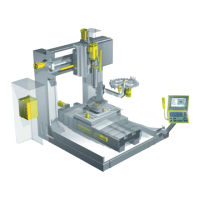February 2012 18 – 243
18 Power supply
18.1 Introduction
A machine tool uses different voltages ranging from few volts up to almost 1000 volts.
Some examples:
5 V voltage for powering the electronics
24 V voltage for powering the PLC
12 V voltage for powering the handwheel
650 V dc-link voltage for powering the drives
The voltages are supplied from different voltage sources.
Some examples:
400 V primary voltage
24 V PLC power supply unit
24 V NC power supply unit
Low-voltage power supply unit in the inverter or the UEC
In this chapter, the voltage sources are described as well as the systems and devices that operate
with these voltages.
18.2 Supply voltages in the HSCI system
Two 24 V supply
voltages
Two separate 24 V power supplies must be used to supply the +24 V power to the individual control
components in the HSCI system:
+24 V NC
+24 V PLC
Insulation of the
24 V supply
voltages
Designation 24 V-NC 24 V-PLC
Insulation Double basic insulation according to
EN 50 178 (PELV).
Simple basic insulation
according to EN 61800-5-1 (ELV)
Reason Electrical safety, e.g. accessibility of
connecting elements supplied with
+24 V NC voltage.
The two supply voltages must not be connected to each other.
The double basic insulation of the NC power supply would be removed through "mixed operation,"
i.e. +24 V NC voltage with double basic insulation connected to PLC components with simple
basic insulation. This is not permitted in an HSCI system.
VDE 0160/EN 50178 is to be observed for the +24 V NC voltage lines and cable routing.
Lines or cables for safely separated electric circuits thus must have double or reinforced insulation
between the wire and the surface if they are routed without spatial separation from other cables
and lines.

